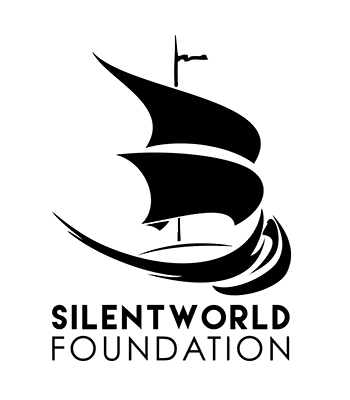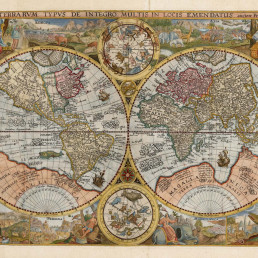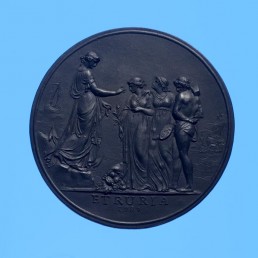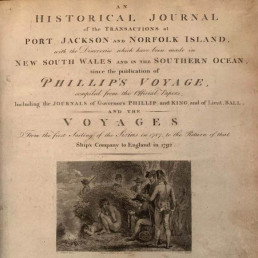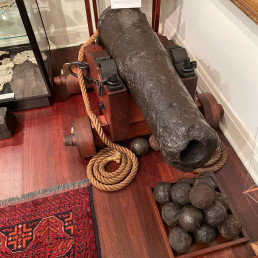
Name/TitleTwo kangaroos
About this objectBrowne, Richard (1776-1824)
Deux kangourous
Gouache watercolour on paper. 29.5cm x 48cm. 27 Philip St, Sydney 1813.
Richard Browne was convicted in Dublin in February 180 and arrived at Sydney in July 1811 in the Providence. In October he was sent to Newcastle for committing a second offence and remained there until his emancipation in 1817. At some time during this period he married, or formed a liaison with, a convict named Sarah Coates who had been transported in the Wanstead in 1814. Sarah had been sent to Newcastle for a year in July, afterwards presumably remaining as Browne’s wife.
As an artist, Browne’s early works were of natural history subjects; later he turned to figurative work, particularly of indigenous Australians. Some of his earliest colonial drawings are the illustrations in a manuscript of the natural history of Australia, prepared in 1813 for Lieutenant Thomas Skottowe, then commandant at the Newcastle secondary penal station where Browne served most of his sentence. The artist may have been related to the Irish natural historian Dr Patrick Browne as the expert way in which the birds, reptiles, fish and butterflies are delineated in the Skottowe manuscript suggests some professional association with a natural history circle. Browne’s animal studies, perhaps because of the strangeness of New Holland mammalia, are less expert, while his early Aboriginal figure subjects are ill-formed and amateurish compared with the natural history subjects.
Browne’s somewhat crude watercolour of two kangaroos is signed by him and annotated with his address in Philip St, Sydney. The painting was purchased by a crew member of Freycinet’s ship L’URANIE who added the underlying French legend during the ship's visit to Sydney in 1819.
MakerRichard Browne - Artist
Maker RoleArtist
Date Made1819
Period19th century
Medium and MaterialsGouache watercolour on paper.
Place MadeSydney, Australia
Inscription and MarksSigned by the artist (Richard Browne) and annotated with his address in Philip St, Sydney, 1819.
Measurements29.5cm x 48cm.
Object TypeGeneral Interest
Object numberSF001615
Copyright Licence![]() Attribution - Non-commercial - No Derivatives (cc)
Attribution - Non-commercial - No Derivatives (cc)
Explore by category
Maps and Charts
Date range: 1541-1836
Ship Models
Date range: 1629-1890
Maritime Paintings
Date range: 1793-1849
Manuscripts and Ephemera
Date range: 1768-c1850
Medallions & Convict Tokens
Date range: 1619-1880
Landscapes
Date range: 1768-c1850
Books
Date range: 1694-c1850
Currency and Shares
Date range: 1624-1823
Printed Material
Date range: 1541-1836
Maritime Archaeology
Date range: 1629-1854
Curator's corner
New acquisitions, staff favourites and curios
The mug is decorated with an underglaze and a blue transfer print. On the body, it is titled ‘Emigrants to Australia’. This type of body and glaze was discontinued by 1840. Comparison of the handle shape and the profile of the foot, point to the attribution of manufacture by the Davenport Factory.
Delta was a ship-rigged vessel with two decks and three masts. It was built in Dordrecht, Netherlands in 1839 at the shipyard of Jan Schouten and registered in the same port. Its hull was constructed of oak and sheathed in ‘yellow metal’. Delta was owned by H. van der Sande at the time of its loss and was engaged as a cargo trader.
The Delta carried 29 crew and passengers, while sailing from Melbourne to Batavia in ballast when wrecked at Kenn Reefs on 30 May 1854 whilst under the command of Captain J.G. Kunst. This vessel loss supports the pattern of shipwrecks located on a well-travelled shipping route that was poorly charted until the mid-nineteenth century. The crew of the Delta could see four other shipwrecks at Kenn Reefs at the time of their vessel’s loss.
Important image of a ship associated with Matthew Flinders, that would shortly become one of the most famous early shipwrecks in eastern Australian waters. This is a fine ship’s portrait, by one of the great exponents of the art
